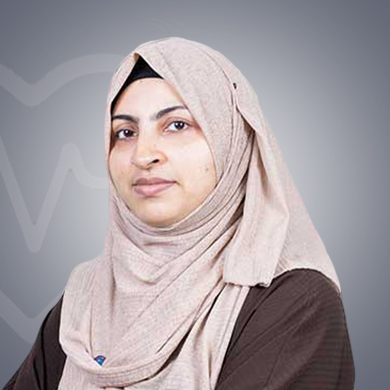
10 Years of experience
Speaks: English
Some of the conditions Gynecologist Laparoscopic Surgeon like Shanitha Fathima treats are:
Endometriosis is a condition that could affect women in their childbearing ages. In this condition, the tissue that lines the uterus grows in some other parts of the body. The most common procedure to treat endometriosis is laparoscopic surgery which involves the removal of scar tissues.
Some of the signs and symptoms that suggest that you should see a Gynecologist Laparoscopic Surgeon are:
Abnormal bleeding is normal during the menstrual cycle. However, if you experience anything unusual, talk to a gynecologist. Never try to treat the condition yourself. Symptoms might result from some mild conditions that are easy to treat. But, if they are not treated on time, they could lead to serious conditions. Consult a Gynecologist Laparoscopic Surgeon who will evaluate your condition and will recommend a treatment plan that is best for you.
Dr Shanitha Fathima can be consulted from 11 am to 5 pm. The doctor is available for consultation and follow-ups 5 days a week. But the doctor is available on all days of the week for emergency cases. gynecologist generally works for 40-50 hours in a week and sees around 20-25 patients daily.
The below-listed popular procedures that Dr. Shanitha Fathima performs are:
Surgery is more preferred for ovarian cysts. Ovarian Cystectomy is a surgical procedure that is performed to remove an ovarian cyst by preserving the fertility and ovary. Ovarian cysts are the fluid-fill sacs formed in the ovaries and lined by a very thin layer. Any ovarian follicle that is larger than three centimeters is called an ovarian cyst.

Share Your Experience about Dr. Shanitha Fathima

Gynecologist Laparoscopic Surgeons are physicians who are trained in treating diseases of the female reproductive systems and providing women health care that focuses on the reproductive organs. While a general doctor can treat minor women's health problems, consultation of gynecologists is very necessary when it is related to some specific aspects of women's health. A Gynecologist Laparoscopic Surgeon also studies the condition of the patient iin order to design the treatment plan. They also diagnose problems that women might be having with the reproductive organs, like polycystic ovarian syndrome and cervical cancer. They also check vaginal infections or urinary tract infections in women. A Gynecologist Laparoscopic Surgeon can even perform minimally invasive surgeries.
A Gynecologist Laparoscopic Surgeon orders or performs the below-given tests to confirm gynecologist conditions:
A Gynecologist Laparoscopic Surgeon performs a few screening tests, to find out problems in people who show no symptoms. If women show symptoms related to their reproductive system (or gynecologic symptoms), different tests to identify the condition causing these (diagnostic procedures) might need to be done. The doctor will perform some tests to detect the condition and plan the treatment as per the test report.
A visit to a Gynecologist Laparoscopic Surgeon is recommended for the annual screening and when a woman shows symptoms like vaginal pain and vulvar and pelvic and abnormal bleeding in the uterus. Other signs you need to visit a gynecologist include: